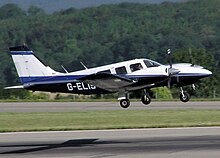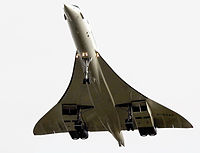Flight lands safely with help from mobile phone text messages
Monday, August 11, 2008
In November 2007, a twin-engine 30-year-old Piper aircraft lost all electrical power on board shortly after departing from Kerry airport in Ireland for a flight to Jersey. Without any electrical power, the pilot was unable to use his radio to contact air traffic control. He was briefly able to re-establish contact with the tower using his cell phone, but that was also disrupted.

Image: Adrian Pingstone.
The report into the incident published on August 6 revealed how a quick-thinking air traffic controller in Cork started sending directions to the pilot by text message. With this assistance, the plane, with five people on board, landed safely after the undercarriage was lowered manually and air traffic control visually confirmed that it was down. Prior to lowering the undercarriage, the first officer noticed that the nose wheel had failed to retract fully and was actually at half its travel.
"In this incident the positive and proactive initiative of the ATC controller, who, on realising that mobile audio communication from the pilot was intermittent, quickly switched to texting his instructions instead", said John Hughes, an air accident investigator who reported on the incident. "This contributed to the safe resolution of the incident and, for such, the controller should be commended for his actions."
The pilot, aged 39 and with 1,900 hours of flying experience, succeeded in climbing to an altitude of 6,500 feet without any problems, but needed to communicate to ensure a safe landing. He originally attempted to contact Kerry airport, and after that failed he made attempts to contact Cork.
The report found that the loss of electrical power was due to the aircraft's alternators failing to maintain the required voltage, probably due to the battery voltage being insufficient to excite the alternator's windings. The relay may have been in poor condition after having been subjected to a heavy load following take-off, possibly contributing to the incident.
Sources
- Simon Hradecky. "SMS saves small airplane" — Aviation Herald, August 11, 2008
- "'Txts' Save Irish Flight" — 4NI, August 8, 2008
- Andrew Bushe. "Controller praised for texting pilot down safely" — Irish Times, August 7, 2008
- John Hughes. "Serious Incident: Piper PA-34-200T, EI-CMT, Shannon CTA Co. Kerry, 7 November 2007: Report No 2008-018" — Irish Air Accident Investigation Unit, August 6, 2008


